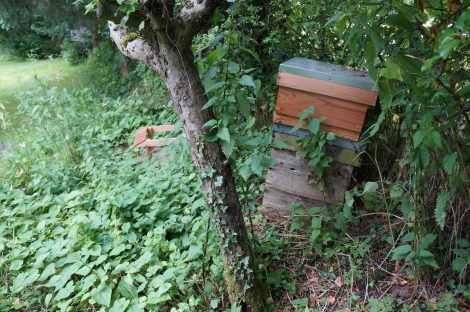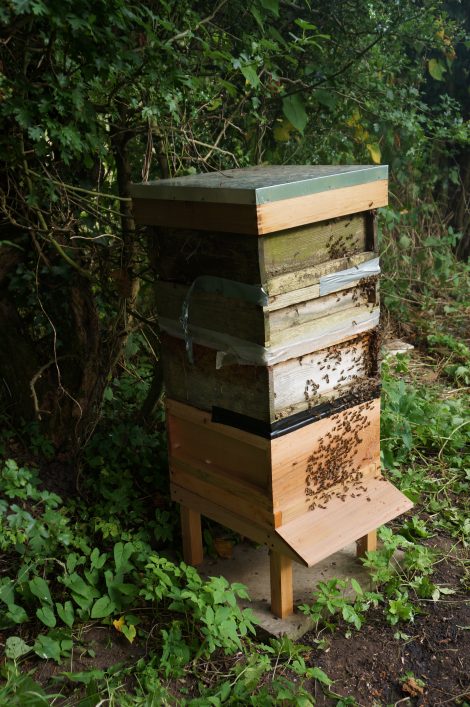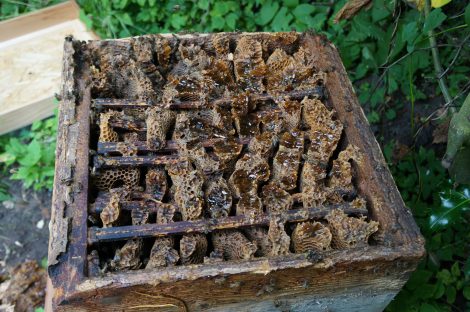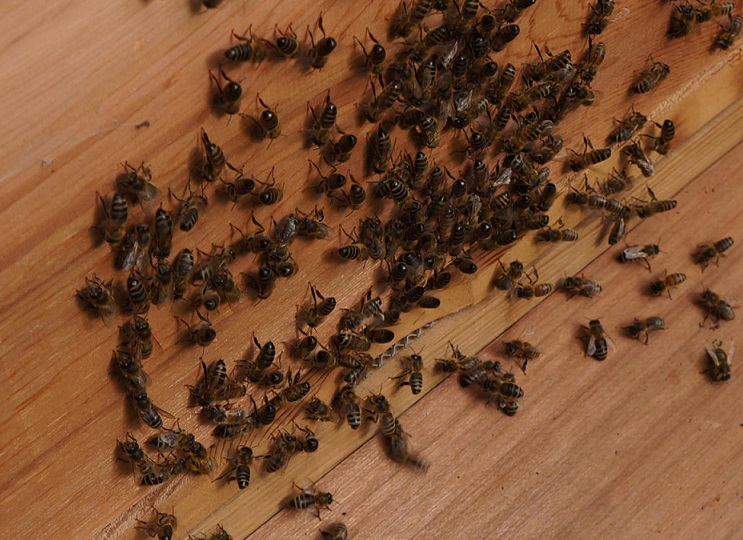- Friday, May 30, 2025
- Stay Connected
 Abraham Lincoln
If given the truth, the people can be depended upon to meet any national crisis...
Abraham Lincoln
If given the truth, the people can be depended upon to meet any national crisis...
 Guildford news...
for Guildford people, brought to you by Guildford reporters - Guildford's own news service
Guildford news...
for Guildford people, brought to you by Guildford reporters - Guildford's own news service
Beekeeper’s Notes August 2016: ‘Barefoot’ Beekeeping
Published on: 1 Aug, 2016
Updated on: 27 Jul, 2016

An old hive in the corner of the large garden was falling apart. The owner had placed a new hive on top with a sugar solution inside to entice the bees but no luck.
Hugh Coakley keeps bees in Worplesdon. In this month’s Beekeeper’s Notes, he talks about a hive that had been abandoned for years and the pros and cons of the bees doing their own thing.
One of the great pleasures I find in beekeeping, is if people ring me up with a bee problem.
You do get to visit some fantastic places. Among others, I’ve been to a mansion in Shere, a 14th-century house in Normandy and a cottage in the ‘middle of nowhere’ that was only a mile from Guildford town centre. All places that I would never have seen otherwise.
You also meet some remarkable people.
It isn’t just that though. It is also the fascination of the problem that you are presented with, be it a bumble bee nest or bees in the chimney.
I was called recently to a family home to help with an old hive, abandoned and untouched for years. They reported that there had been bees in it since they had moved in 12 years ago but the hive was gradually falling apart.
The houseowner wanted to re-house the bees in a new hive. My solution was to place the old hive on top of the new hive and encourage the bees to take up residence. Hopefully, that will work.

The old hive on top of the new. The gaps between the broken edges of the old hive were temporarily sealed with duct-tape to ensure that there was only one entrance. This meant that the bees had to come through the new hive and, hopefully, become acquainted.
Looking inside the old hive, you could see very old comb and rotten wooden frames and, incidentally, no brood. This should be peak egg-laying time for the queen so, with no brood seen, there is a possibility that it is queenless.

Very old, dark comb running in all directions inside the old hive. It is hard to see how the bees can thrive in this with no space for comb renewal and the the potential for a build up of disease. With the hive falling apart, you have to be a bit brutal and salvage what you can.
With a bit of luck though, there will be an active queen and the bees will take advantage of the new space and move in. It did look promising with the bees fanning at the new entrance to let foraging bees know where they had moved to.

Click in the photo to enlarge it to see the bees fanning at the entrance of the new hive. They broadcast the Nasanov pheromone to orient foraging bees to the new hive by raising their abdomens upwards, away from the hive and fan their wings vigorously.
Interestingly, I asked the houseowner if he intended to keep the bees. He was quite definite and said yes and that he liked the idea of ‘barefoot’ beekeeping.
I am not entirely clear what this actually means. It isn’t literally taking your socks off when inspecting bees. I think though it implies keeping bees but with minimum interference.
To me, that is a bit heretical. It sees the ideal rather than the reality.
But, as he pointed out, bees have been around for 10 million years and they did very well without us.
Of course, he is completely right.
For 9,950,000 years, there were hardly any humans about at all, if any. Then, for the next 49,000 years, the impact of humans on bees was minimal.
It is only in the last 1,000 years or less that we have been making up for lost time and wildlife, including the bees, is paying the price.
With habitat loss and humans introducing pests and diseases that the bees are not used to, they are having a hard time now.
So, do we manage our bees despite us causing their problems in the first place or, are they better of if we go ‘barefoot’ and leave them to get on with it themselves?
















Harry Eve
August 2, 2016 at 7:26 am
There is a book called “The Barefoot Beekeeper” by PJ Chandler – found by searching the web. It seems to be about natural and sustainable methods and the “customer reviews” look interesting and informative, including those from experienced beekeepers.